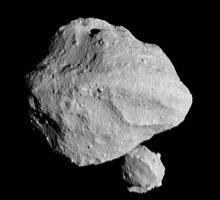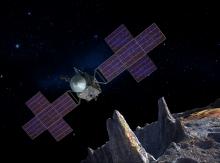Listen to today's episode of StarDate on the web the same day it airs in high-quality streaming audio without any extra ads or announcements. Choose a $8 one-month pass, or listen every day for a year for just $30.
You are here
Dusty Display
The asteroid 3200 Phaethon is the type of object that doesn’t usually get a lot of attention. It’s a boulder about three miles across that orbits the Sun once every year and a half. It passes so close to the Sun that any ice it might have been born with should have vaporized long ago, leaving only bare rock.
Yet Phaethon is of special interest because it’s the parent of the Geminid meteor shower. The shower is expected to be at its best over the next couple of nights. And the Moon sets early enough that it will allow the meteors to shine through.
Over the last few years, as Phaethon passed closest to the Sun, it behaved more like a comet than an asteroid — it grew much brighter, and sprouted a tail.
Comets have lots of frozen water and gases. When they get close to the Sun, some of the ice vaporizes, releasing gas and dust into space. This material surrounds the comet, making it much brighter. Sunlight and the solar wind blow some of it away from the comet, forming the tail.
Phaethon has long since lost its ice, though. Instead, the intense heat probably cracks its rocky surface, releasing grains of dust into space. This material briefly surrounds Phaethon, making it brighter. The Sun pushes the dust away, forming a tail. Most of the dust is quickly blown into space. But some of the larger bits join the cloud of debris that causes the Geminid meteor shower — providing fresh material for a celestial lightshow.
Script by Damond Benningfield





